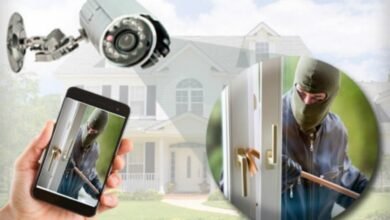The Evolution of Smart Homes and IoT: Step by Step Guide.

In the fast-paced realm of technology, the evolution of smart homes and IoT (Internet of Things) has been nothing short of remarkable. From the pages of science fiction to the very fabric of our daily lives, the integration of smart technologies has reshaped how we interact with our living spaces. As the demand for convenience, efficiency, and connectivity continues to rise, smart homes have transitioned from mere fantasies to tangible realities, revolutionizing the way we perceive and interact with our homes.
The term “smart home” encompasses a broad spectrum of interconnected devices and systems designed to automate tasks, enhance security, and optimize energy usage. Similarly, the Internet of Things (IoT) refers to the network of interconnected devices embedded with sensors and software, enabling them to collect and exchange data over the internet. This convergence of technology has ushered in a new era of connectivity and convenience, where homes are no longer static structures but dynamic ecosystems capable of adapting to the needs and preferences of their occupants.
The Evolution of Smart Homes and IoT From
Smart Homes and IoT
Smart homes refer to residences equipped with devices and systems that automate tasks and provide convenient control over various functions, such as lighting, heating, security, and entertainment. IoT, on the other hand, encompasses the network of interconnected devices embedded with sensors and software, enabling them to collect and exchange data over the internet.
The concept of smart homes and IoT emerged from the convergence of advancements in technology, including wireless communication, miniaturized sensors, and the internet. Early pioneers envisioned a future where homes could anticipate and respond to occupants’ needs, leading to the birth of this transformative trend.
Key Components of Smart Homes
Central to the functioning of smart homes are several key components, including connected devices and appliances, sensors, actuators, centralized control systems, and sophisticated data analytics powered by artificial intelligence. These elements work in harmony to create an intelligent ecosystem within the home.
Connected devices, ranging from smart thermostats to voice-controlled assistants, form the backbone of a smart home, allowing users to remotely monitor and control various functions. Sensors detect changes in the environment, while actuators initiate actions based on predefined parameters. Centralized control systems provide a user-friendly interface for managing connected devices, while data analytics enable predictive insights and personalized experiences.
Advantages of Smart Homes and IoT
The integration of smart technologies into homes offers numerous benefits to homeowners, including unparalleled convenience, energy efficiency, enhanced security, and an improved overall quality of life. Automation streamlines daily routines, while energy-saving features reduce utility bills and environmental impact. Advanced security systems provide peace of mind, and personalized settings cater to individual preferences, enhancing comfort and satisfaction.
Challenges and Concerns
Despite the numerous advantages, the widespread adoption of smart homes and IoT is not without its challenges and concerns. Privacy and security issues arise from the constant collection and transmission of data, raising questions about data ownership and unauthorized access. Compatibility issues between devices and platforms pose interoperability challenges, while the initial cost of investment may deter some potential users. Moreover, dependence on technology leaves homes vulnerable to disruptions caused by network outages or system failures.
Impact on Daily Life
Smart home technologies have permeated various aspects of daily life, revolutionizing how we interact with our living spaces. From automated lighting and climate control to smart appliances and home entertainment systems, the possibilities are endless. IoT integration extends beyond the confines of the home, with connected devices enabling remote monitoring and control from anywhere with an internet connection.
Integration with Other Technologies
The evolution of smart homes and IoT is closely intertwined with other emerging technologies, such as artificial intelligence, voice assistants, augmented reality, and virtual assistants. AI-powered algorithms optimize energy usage and adapt to users’ preferences over time. Voice-controlled assistants enable hands-free operation of smart devices, while augmented reality enhances the user experience through interactive interfaces. Virtual assistants provide personalized recommendations and assistance, further enhancing the smart home ecosystem.
The Future of Smart Homes and IoT
Looking ahead, the future of smart homes and IoT holds immense promise and potential. Industry experts predict continued growth and innovation, fueled by advancements in technology and changing consumer preferences. Innovations such as smart cities and connected communities offer a glimpse into the interconnected future, where homes seamlessly integrate with the broader urban infrastructure. However, challenges such as privacy concerns and regulatory issues must be addressed to realize the full potential of smart technologies.
Read More: The Future of IoT: Next-Generation Products and Services
Conclusion
FAQs
What makes a home “smart”?
A smart home is equipped with interconnected devices and systems that automate tasks and provide convenient control over various functions, such as lighting, heating, security, and entertainment.
Are smart homes secure?
While smart homes offer enhanced security features, concerns about privacy and data security remain valid. It’s essential to implement robust security measures, such as encryption and regular software updates, to safeguard against potential threats.
How do smart homes contribute to energy efficiency?
Smart home technologies optimize energy usage through features like programmable thermostats, smart lighting systems, and energy-efficient appliances. By monitoring and adjusting energy consumption based on occupancy and usage patterns, smart homes reduce waste and lower utility bills.
Can smart home devices be integrated with existing home systems?
Yes, many smart home devices are designed to be compatible with existing home systems and platforms. However, compatibility issues may arise, so it’s essential to research and choose devices that seamlessly integrate with your specific setup.
What is the future of smart home technology?
The future of smart home technology holds exciting possibilities, including advancements in artificial intelligence, automation, and connectivity. As technology continues to evolve, we can expect smarter, more intuitive devices and systems that further enhance our living experiences.







